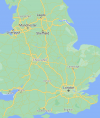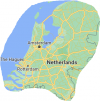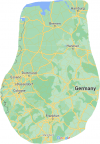ABB125
Established Member
It always amuses me that you can do 60mph on a standard single-carriageway road, but when a 2-lane dual-carriageway has one carriageway closed (eg: for resurfacing), with traffic in both directions is moved to the other carriageway, there are always silly reflective plastic things sticking out of the tarmac along the centre line and a 50mph limit. How is 2-way traffic on one carriageway of a dual-carriageway any different to a single-carriageway, such that it needs a lower speed limit and fittings to "remind" drivers not to cross the white line?It really isn’t. I can drive at 60mph on the main road by my house, with no hard shoulder, and traffic coming the other way at 60mph with no barrier between us!
For example, the A46 Warwick bypass is currently in this state.
Pedantic note - Highways England has very recently been rebranded to National Highways. No-one knows why. They've still got the same logo (and lack of imagination/"if it's not a traffic-light roundabout we're not building it") though.There also needs to pressure on Highways England to properly manage the signs
As for smart motorways, I have no issue with them. No hard shoulder - need I say more that A34, A14, A1 etc? It's absolutely no different to a non-motorway dual-carriageway (though admittedly there tends to be 4 lanes on the upgraded motorway, and 2 on the A roads mentioned).
Variable speed limits - good idea, but need to be enforced. But also need to be managed properly.
Dynamic hard shoulder (DHS) - very bad idea. It's confusing ("can I use the hard shoulder?" (yes I know the signs tell you if you can, but some people are stupid!)), leads to very poorly-designed junction markings (for example, what on earth are you meant to think of this https://www.google.com/maps/@52.509...4!1skCX_RwqUCFqS0uv_f2TVkA!2e0!7i16384!8i8192 when the hard shoulder is being used as a running lane?) and normalises crossing a solid white line. Fortunately, all DHS is due to be converted to ALR over the next few years.
All-lane running (ALR) - good idea*. The hard shoulder is simply converted into a normal lane. Nothing confusing whatsoever. All that needs to be done is to shred the license of any driver who doesn't comprehend the fact that there's more to a motorway that lane 2 (or more likely 3 on ALR). Though this isn't something which should be restricted to smart motorways only!
*Of course, the sensible thing to do would have been to create a proper strategic road network, with more alternative, high-quality routes, so that traffic doesn't have to funnel through a single road ("all the eggs in one basket"). This also provides resilience at times of disruption. Then, there would be no need to increase capacity on the current road network.
As an example, the A50 between the M6 near Stoke-on-Trent and the M1 at not-quite-Nottingham-nor-Derby-nor-Loughborough. Were this to be fully grade-separated and improved to a consistent standard, some traffic between the M6 and M1 would use this, instead of the M6 through Birmingham. Traffic volumes on the M1 might increase a bit, but because we're thinking strategically, this would be offset by an upgraded A1 (taking more of the London-North traffic off the M1). Etc etc.
Here's a comparison of the UK with the Netherlands and (part of) Germany (countries with much more of a "network" than the UK) at the same zoom level on Google Maps. In the UK, all the thick yellow lines are motorways, a couple of major A-roads are shown in medium thickness (but, notably, not the A42 (which of course should have been built as a motorway in the first place) nor a few others), and the thin lines are irrelevant. I'm not familiar enough with the other two countries, but I assume they're similar.



(However, this is a slightly different topic, so I'll stop there!)

